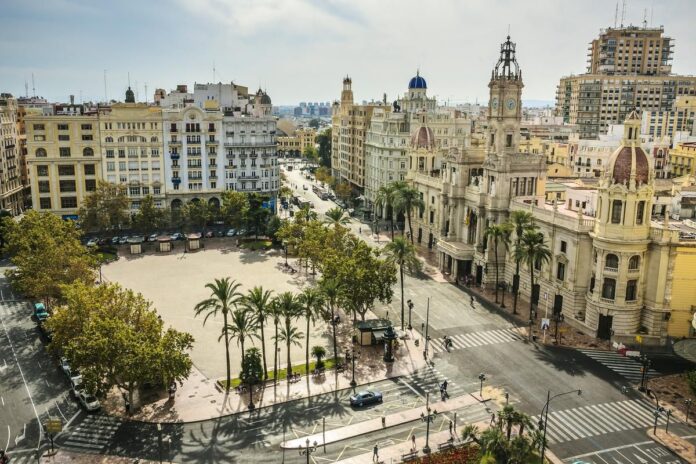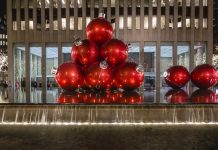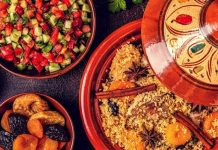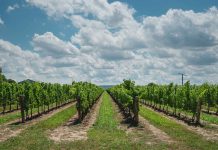Valencia, Spain’s third largest city, has a character all its own, reflected in its distinctive arts, crafts and festivities (most famously, the spring spectacle known as Fallas). As the birthplace of paella and a hub of horchaterías, it’s a gastronomic delight, too.
Headline sights abound, including the cultural complex known as the City of Arts and Sciences, but those who stray beyond the tourist hot spots are richly rewarded. This year is an especially exciting time to visit Valencia, as it celebrates being both a European Capital of Smart Tourism and the World Design Capital in 2022. Here are a few places I discovered while living in the seaside metropolis this winter, all worth adding to your future travels.
For a taste of local life: Horchatería Daniel (Mercado de Colón, Carrer de Jorge Juan 19, Valencia)
Valencia’s horchata (a beloved plant milk drink) dates back to the 13th century and is so integral to society that it’s served up in its own specialist cafés, known as horchaterías. Sweet and refreshing, it’s made from crushed tiger nuts — actually not nuts but tubers from a sedge plant — and is often accompanied by long spongy buns called fartons, ideal for dunking. Daniel is arguably the region’s most historic horchatería and has three branches, including one in Mercado de Colón, an art nouveau treasure in the city centre, where you should sample your first glass. The flagship in nearby Alboraya, a town famed for its tiger nut cultivation, is also worth a visit.
For its famous Fallas tradition: Museo del Artista Fallero de Valencia (Avenida de Sant Josep Artesà 17, Valencia)
Valencia’s annual Fallas celebration (or Falles in Valencian) is among Spain’s biggest and wildest festivals, transforming the city with an explosion of parties and pyrotechnics. But what makes the UNESCO-listed event truly special is its ninots — satirical, often oversized characters sculpted from wood, plaster and papier mâché. Not visiting in March, when the festivities are on? Museo del Artista Fallero de Valencia, the lesser-known of two Fallas museums in the city, is situated in an outlying neighbourhood known for its ninot craftsmanship and reveals a unique glimpse into how the fantastical sculptures are made.
For avant-garde architecture: Palau de les Arts Reina Sofía (Avenida del Professor López Piñero 1, Valencia)
Thanks to visionary local architect Santiago Calatrava, every building in the City of Arts and Sciences, Valencia’s landmark cultural complex, is striking; expect futuristic shapes, innovative angles and sweeping planes of white. While visitors flock to venues like the Museu de les Ciències (science museum), relatively few venture inside Palau de les Arts — the opera house that’s as spectacular inside as out, with surprise gardens and majestic auditoriums. Catch a performance here to appreciate it properly, and consider dining with Sea Saffron beforehand: the small-group tour company’s unusual City of Arts and Sciences experience features tapas and regional wines on Valencia’s highest private rooftop terrace, where the panoramic vistas include a bird’s-eye view of the sculptural Palau.
For its ceramic heritage: Lladró Boutique (Carrer del Poeta Querol 9, Valencia)
From Manises to Nolla, the Valencia region has inspired centuries of ceramic artistry (check out González Martí National Museum of Ceramics and Decorative Arts, located inside a superb baroque palace, for an engaging overview). But perhaps its most prominent present-day label is Lladró, which produces everything from traditional figures to contemporary jewelry. For shopping in the city centre, drop by the Lladró Boutique on Poeta Querol; those who want to learn more can also visit the store and museum at its Tavernes Blanques factory about a 15-minute drive away. Fancy a drink? There’s even an on-theme cocktail spot, Lladró Lounge Bar, inside Hotel Palacio Vallier.
For its unsung agricultural heartland: L’Horta historical region
Few tourists realize that Albufera Natural Park, the picturesque cradle of paella, is part of a wider region called L’Horta, or La Huerta (“the Orchard”). This medley of paddies, plantations and distinctive farmsteads is famed for its ancient Arabic irrigation system, inspiring the UNESCO-inscribed Water Court. The region has also long been home to important Valencian trades and traditions, from tiger nut cultivation to ceramic production and the culinary custom of esmorzaret (mid-morning snack). Don’t miss a trip to this underrated area, just on the edge of Valencia city; consider going with an agri-tourism specialist like Horta Viva for a full immersion.
The federal government recommends Canadians avoid non-essential travel. This article is meant to inspire plans for future travel.
JOIN THE CONVERSATION
Conversations are opinions of our readers and are subject to the Code of Conduct. The Star does not endorse these opinions.


/https://www.thestar.com/content/dam/thestar/life/travel/2022/02/18/valencia-spain-is-a-european-capital-of-smart-tourism-this-year-heres-where-to-take-in-the-sights-and-gastronomic-delights/fallas_ninots_credit_visit_valencia.jpg?ssl=1)
/https://www.thestar.com/content/dam/thestar/life/travel/2022/02/18/valencia-spain-is-a-european-capital-of-smart-tourism-this-year-heres-where-to-take-in-the-sights-and-gastronomic-delights/palau_de_les_arts_credit_yunming_wang_unsplash.jpg?ssl=1)
/https://www.thestar.com/content/dam/thestar/life/travel/2022/02/18/valencia-spain-is-a-european-capital-of-smart-tourism-this-year-heres-where-to-take-in-the-sights-and-gastronomic-delights/lladr_boutique_credit_visit_valencia.jpg?ssl=1)
/https://www.thestar.com/content/dam/thestar/life/travel/2022/02/18/valencia-spain-is-a-european-capital-of-smart-tourism-this-year-heres-where-to-take-in-the-sights-and-gastronomic-delights/farmhouse_in_l_horta_credit_visit_valencia.jpg?ssl=1)








